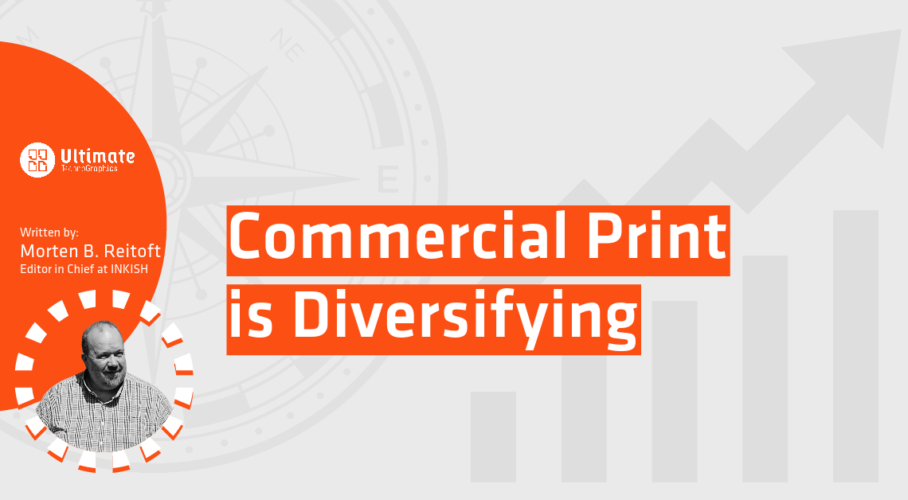Commercial print is diversifying (into new opportunities of wide-format or marketing-related packaging)
Too many people think that print is dead, and I often get annoyed when hearing it. However, as an industry, we may not be good enough to explain that print is more than newspapers and Yellow Pages, so maybe we deserve our ‘death certificate?’ No – of course not, but it gives me a fantastic opportunity to talk about the options we have as an industry and how many printers are diversifying their business these years!
Diversification is not always an active decision but happens because of an ever-changing customer demand. The changes can be minor and happen within your existing expertise. It can also happen because you decide to invest in new technology that, for example, insource production, gives you better access to the latest technology for a broader range of customers. Printing companies also often diversify into new segments because combining existing technology with new, relatively small investments can open new doors to more business.
Sometimes, the diversification comes from acquisitions, where a company acquires another company with a mix of technologies that gives you easy access to more customers – and, of course, you also see printing companies adding new capabilities to explore new business opportunities.
The above examples are about product diversification, but the most important learning is to be where your customers are. I can’t help thinking about the book “The New Print Industry” by Akshat Pardiwala, which describes all the technologies that used to belong to other industries – think of signage, textile, and even additive printing technologies like 3D – all and more of these technologies were industries in their capacity. Today, we take it for granted they belong to the printing industry. With wide format and packaging, many commercial printers see this as an opportunity. Many see packaging as an opportunity because they can combine existing technology with new investments, such as die-cutters, gluers, etc. But also because packaging won’t be replaced by any digital options shortly – of course 🙂
When serving customers, it’s about being better than the competition, and as with everything else in this industry, produce cheap, sell expensive – or at least with reasonable margins. Workflow/automation is critical in all types of production. You must consider how you can optimize your production in the best possible way. A few days ago, I was visiting a printing company in Arizona, which recently invested in a new ERP/MIS system. The owner told me that the previous MIS system required a handheld delivery of information from process to process, and even small changes in a calculation could take forever. Of course, this example is just one. Still, after buying a new MIS/ERP solution, three people could be allocated to more valuable work, and in times when labor is a resource in demand – think what would happen if you don’t have your workflow under control.
A well-integrated workflow/automation solution will free up people and capacity so you can utilize your existing equipment and become even more profitable!
Investing in new machines to produce whatever you want is about the machine’s capabilities and how you integrate the printer into your workflow. If you acquire another company, you must ensure that your two companies’ workflow is integrated as soon as possible. The value of automation may even be something financial due diligence not only takes into account – this is hidden profits that can become tremendously important, in my mind.
Product diversification is a must – you can’t produce products that customers don’t have a demand for. I don’t have to tell you that (of course), but integrating the new offerings into everything you do is a must. If you are not already focusing on workflow/automation, I strongly recommend starting with that before considering product diversification or acquisitions. If you are running a company that you want to sell – make your company more valuable by automating the company before selling it.
This article was written by Morten B. Reitoft, Editor in Chief of INKISH.

